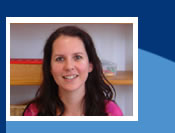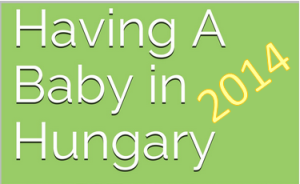By Krisztina Gaal
I am a big fan of baby sign-language. I like it on many levels.
 My first encounter with sign-language happened in Ireland while working with autistic children. It was such a great help to be able to communicate with these children. Years later, when I heard about baby sign-language from an American friend, I got very interested as it fit right into my new field of work; moms and babies. So for the last 4 years, as part of my repertoire of classes, I teach moms how to sign with their babies.
My first encounter with sign-language happened in Ireland while working with autistic children. It was such a great help to be able to communicate with these children. Years later, when I heard about baby sign-language from an American friend, I got very interested as it fit right into my new field of work; moms and babies. So for the last 4 years, as part of my repertoire of classes, I teach moms how to sign with their babies.
There is lots of information available about the wide range of benefits of using sign language from an early age but just to sum it up here:
- Reduce tantrums and frustration on both sides; they can “tell” what they want.
- Promote literacy by stimulating interest in books; as they can “read” by signing what they see.
- Accelerates verbal language; communicating jumpstarts the speech.
- Increases IQ.
- Connects the two hemispheres of the brain; they are processing the same word on both sides, language on the left, fine motor function on the right.
- Enhance bonding while opening a window into your child’s world in an earlier age.
- It’s great fun.
And one more reason which doesn’t apply to all but many families in this community is that it’s a bridge between languages. So bilingual/multilingual families please read on!
Many children are raised in families who speak more than one language; where parents are passing on their cultural roots. We all know that learning more than one language from birth has benefits which last for a lifetime. In the short-term, however, babies who learn more than one spoken language do tend to have some delay in their rate of spoken language development. This doesn’t mean they will fall behind their monolingual peers for long, they just have twice as much to process so they need a little time to catch up. They are developing a larger more complex network in the area of the brain what handles spoken language (left cerebral hemisphere).
You might wonder if adding a third language in the form of sign -language might confuse your child and cause further delay in speech development. Quite the contrary, bilingual babies who sign have been shown to learn both spoken languages better and faster than children who learn two spoken languages alone.
A bit of science: Cognitive development of infants raised in a bilingual household accelerates in order to manage which language they are dealing with. This improves the part of the brain which is responsible for organising, planning, prioritising, shifting attention from one thing to another; allowing them to became better decision makers. Adding a third language further increases this cognitive skill. In the case of sign language the baby will have visual reinforcement using another side of her brain simultaneously and will likely improve her ability to understand and to support emotion with body language.
Sign-language acts as a bridge between spoken languages. When I feed my baby I sign and say “Tejcsi” and when daddy feeds her he uses the same sign and says “Milk”. This way, baby is given a visual signal showing that “Tejcsi” and “Milk” both mean the same thing. This makes it so much easier for baby to figure things out that there is more than one way to say the same thing.
My 3 year old daughter was able to communicate with us from 10 months old by using sign-language. By the age of 1 she had around 25 active signs helping us hugely in our everyday life. Her signing vocabulary grow to be around 60 signs. Her language development has been exactly level with monolingual children’s. She used more spoken English at first as it was the easier option compared to Hungarian; then her Hungarian got stronger; and now she is equally fluent in both languages. She carried on using signs after she began speaking, making those early words much more clear for us. She only signs now for fun and to teach her baby sister, but her expressive body language remains. Both my husband and I signed with her from birth. It never worried me that I was confusing her switching between languages as I knew that signing will make everything clear for her. She used to mix the two languages at 2 years of age but always seemed to understand the difference between Mami’s language and Daddy’s language. She is actually a very good translator now
I think there is much more we can thank sign-language for than we have ever imagined. It needs a bit of determination and persistence from the parents side, but once it starts working, what you get is so worth it!
If you think baby sign-language is for you contact krisztina@monkeybusiness.hu for details of her next course.
******************************************
 Krisztina Gaal B.A. Educator and Movement Therapist. Krisztina’s experience with small children goes right back to her education in the world famous Petö institute where she received her degree in the movement therapy known as conductive education. There she also received a Bachelors degree in primary school education. On moving to Ireland she lead a mother a & toddler group where she furthered her studies with a Diploma in Montessori Education and a certificate in Counselling and Psychology. After 8 years in Ireland, where she perfected her English and received a distinction in Academic IELTS, Krisztina moved back to Budapest where she led a class for 2 to 3 year olds in an international kindergarten. Krisztina founded Monkey Business to bring Mums together and to support them in raising their child in the best way possible.
Krisztina Gaal B.A. Educator and Movement Therapist. Krisztina’s experience with small children goes right back to her education in the world famous Petö institute where she received her degree in the movement therapy known as conductive education. There she also received a Bachelors degree in primary school education. On moving to Ireland she lead a mother a & toddler group where she furthered her studies with a Diploma in Montessori Education and a certificate in Counselling and Psychology. After 8 years in Ireland, where she perfected her English and received a distinction in Academic IELTS, Krisztina moved back to Budapest where she led a class for 2 to 3 year olds in an international kindergarten. Krisztina founded Monkey Business to bring Mums together and to support them in raising their child in the best way possible.








 ....
....

{ 1 comment… read it below or add one }
I would just like to totally second this article. although I do not have a bilingual family, i used baby signing with my daughter from when she was young (about 6 months) at at 8 months she signed ‘byebye’, ‘hello’ and ‘milk’. by 12 months old she had 31 signs (i kept a list!). by 13/14 months my daughter spoke about 40 words, many of these very clearly. Siging really had a big impact in our family, it was amazing to have a window into our child’s thoughts and what she could see and hear around her. She was also very pleased we could understand her and it greatly reduced frustrations. I would totally recommend baby-signing to anyone with a baby!!! its amazing. My daughter is now almost 2 and she still uses her signs along with the spoken word a lot of the time, especially if she wants to make extra sure you know what she wants or if shes excited. she still enjoys learning new signs too - which is fun for us all!